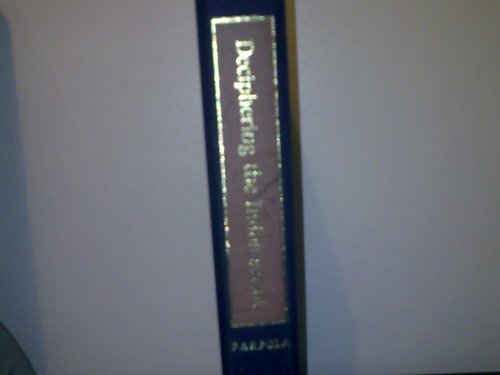Articoli correlati a Deciphering the Indus Script

Sinossi
This fascinating study confirms that the Indus script was logo-syllabic and that the Indus language belonged to the Dravidian family.
Le informazioni nella sezione "Riassunto" possono far riferimento a edizioni diverse di questo titolo.
Recensione
'This book is substantial, in every sense of the word ... does make a forceful case for a partial decipherment ... it will become the standard reference work and the basis for any further debate.' Stuart Blackburn, South Asia Research
'... deserves much credit for having pursued this enquiry to the very limits of what is now possible.' John Chadwick, The Times Higher Education Supplement
'... indispensable research tool ... a book of lasting value.' Florian Coulmas, Language
'The best informed, most cogently argued, and important work to date on the Indus script.' Richard Salomon, Journal of the American Oriental Society
'By far the most comprehensive and well researched study of the Indus script ... It will certainly remain a classic source book for many years to come.' Jonathan Mark Kenoyer, American Anthropologist
'... doubtless the most important study of the Indus script ...' Thomas Oberlies, Bulletin of the School of Oriental and African Studies
'... most complete and best-informed treatment of the subject.' Michael D. Coe, Antiquity
Descrizione del libro
The Indus script developed in the Indus or Harappan Civilization, which flourished around 2500–1900 BC in what is now modern Pakistan. In this fascinating study, Professor Parpola outlines what is known about the Harappan culture and its script and proposes a method which will permit further progress in decipherment.
Le informazioni nella sezione "Su questo libro" possono far riferimento a edizioni diverse di questo titolo.
(nessuna copia disponibile)
Cerca: Inserisci un desiderataNon riesci a trovare il libro che stai cercando? Continueremo a cercarlo per te. Se uno dei nostri librai lo aggiunge ad AbeBooks, ti invieremo una notifica!
Inserisci un desiderata
